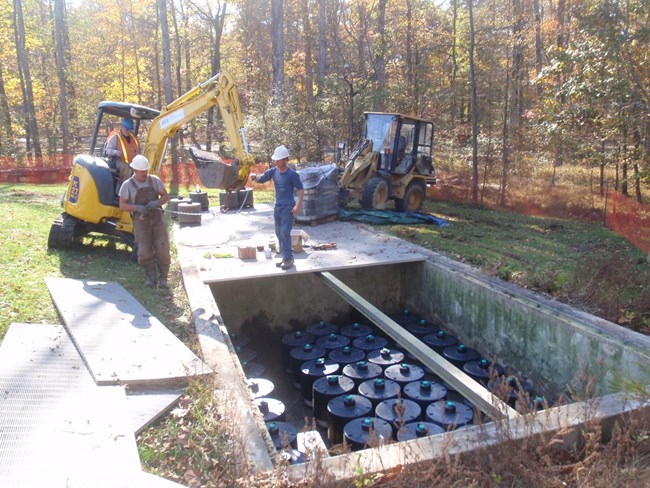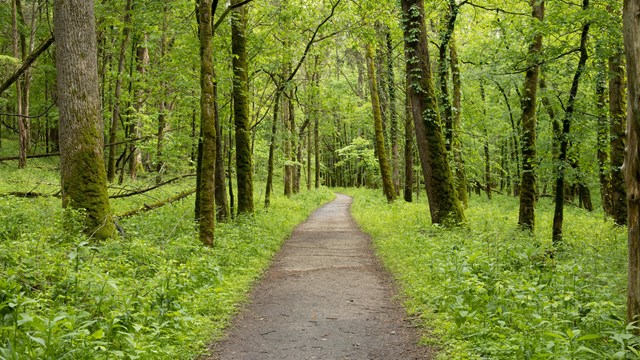
NPS Photo The Link Between Water, Rocks, and Cave SystemsHydrology is the study of how the Earth’s water flows across and through the land. In karst landscapes like the Mammoth Cave area, much of the water flows underground through caves. Meaning that, for much of the water’s journey, we cannot actually see the water flowing or where it is going. Following the Path of WaterIn order to understand where the water is going in karst landscapes, park managers use specialized techniques to track the water in the park. One of these techniques is dye tracing. In dye tracing, harmless fluorescent dyes are poured into a water source before it disappears into the ground. These dyes can later be detected at springs and in different areas of the caves. By tracking the dye traces that are performed, maps can be made that show where the water is flowing underground even if we cannot see while we are standing on the surface. 
NPS Graphic Protecting Our GroundwaterBecause area water runs off the surface and goes quickly into sinkholes and into the groundwater, it is extremely prone to pollution by contaminants on the land. These contaminants could include spilled chemicals, animal waste, sewage, or pesticides and fertilizer used on yards and crops. These pollutants threaten cave creatures like endangered Kentucky cave shrimp and ultimately the water and diverse aquatic life of the Green River.
Visit our keyboard shortcuts docs for details
Learn how water connects us all in the Mammoth Cave Biosphere Region. Scientists, farmers, river paddlers, conservationists, and the national park speak about the importance of ground water conservation in a short film created by Lia Nydes of the Center for Environmental Filmmaking in partnership with the Mammoth Cave Biosphere Region, Barren River Area Development District, Western Kentucky University, and the National Park Service. 
NPS Photo The park is also concerned about pollution that comes from inside the park itself. Parking lots around the hotel and visitor center receive hundreds of thousands of cars on them each year. Some of these cars drip fluids which can pollute the cave system that runs directly below and around the parking lot areas. To protect the cave from this contamination, stormwater from the park parking lots is directed through special filter areas that remove many of the contaminants from the run-off before it can enter the cave. 
Karst Topography
Sinkholes, sinking streams, caves and more! 
International Designations
In addition to being a national park, Mammoth Cave is an international biosphere reserve and world heritage site. Learn More About TheUS Biosphere Network |
Last updated: June 6, 2024
